The Portsmouth Navy Yard is a United States Navy shipyard in Kittery on the southern boundary of Maine near the city of Portsmouth, New Hampshire. Founded in 1800, PNS is U.S. Navy's oldest continuously operating shipyard. Today, most of its work concerns the overhaul, repair, and modernization of submarines. he Portsmouth Naval Shipyard was established on June 12, 1800, during the administration of President John Adams.
Water Transportation
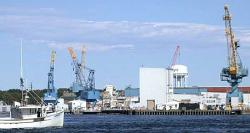
The confluence of the Mohawk and Hudson rivers was the site of distinct advances in transportation of the early 19th Century. The Erie Canal in 1825 and the Mohawk and Hudson Railroad in 1831 were both of national significance.
After more than 50 years of contention and debate, dredging began in 1911 on an eight-mile channel connecting Puget Sound, Seattle's gateway to the Pacific, to two inland freshwater lakes, Lake Washington and Lake Union. With the completion of the Lake Washington ship channel and Chittenden locks, coal and logs from the interior had a dedicated water route to the ocean, and the city's 4 1/2 miles of coastal harbor burgeoned into 100 miles of commercial, industrial and recreational piers and wharves.
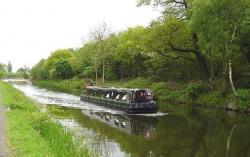
It took 22 years to complete the 35-mile waterway, as funding problems caused the work to shut down from 1777 to 1785.
The notion of creating a canal that crossed Scotland was conceived in the 17th century during the reign of Charles II, but would not be realized for nearly 100 years. The Forth and Clyde Canal, known as The Great Canal in its early years, was the first major transportation project in Scotland and the world's first man-made, sea-to-sea ship canal.
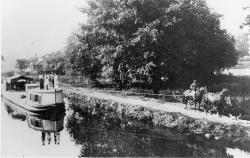
Between 1825 and 1847 the State of Ohio constructed 1,000 miles of canals and feeder canals, 33,000 acres of reservoir surface area, 29 dams across streams, 294 lift locks, 44 aqueducts and many smaller structures at a cost of about 16 million dollars. The network of navigable canals provided a system of economical transportation where none had previously existed; the young state, with its isolated frontier lifestyle, was transformed almost overnight into a thriving segment of the nation's economy.
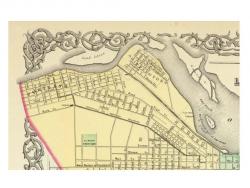
Chartered in 1825, the Louisville and Portland Canal Company was authorized to construct a canal around the rapids called the "Falls of the Ohio." Construction started on March 1, 1826. The canal and first generation of locks were completed in 1830. As originally constructed, the canal was 1.9 miles long, 64 feet wide, and terminated at its lower end with a three-flight lock system with a total lift of 26 feet. Each lock chamber was 198 feet long between miter posts, with available length for vessels of 183 feet, width of 52 feet, and a lift at low stages of 8.5 feet.
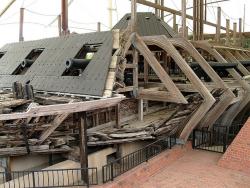
The Cairo is the sole survivor of the fleet of river gunboats built by the Union during the Civil War with the object of controlling the lower Mississippi River. Designed by Samuel Pook and built by James B. Eads, it saw limited battle and was sunk on the Yazoo River in 1862 by newly developed electronically detonated mines, becoming the first craft ever sunk by this predecessor to torpedo technology. The 175-foot ironclad vessel had 13 guns.
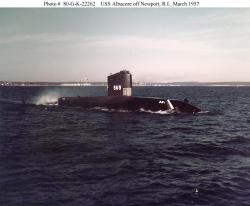
The USS Albacore (AGSS-569) represented a radical change in submarine design. The hull was designed with underwater speed as the prime requirement, and it was built with newly developed high-strength steel (HY-80). In addition to these two major innovations, the Albacore served as a test vessel for many new designs in submarine technology so that they could be refined before implementing them into the fleet. Among them was the testing of various control designs and correlation of actual sea-trial performance with that predicted in tow-tank tests.
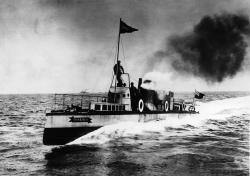
The Turbinia was the world's first turbine-driven ship. It attracted worldwide attention at the 1897 Spithead Naval Review by traveling more than 34 knots. This remarkable performance accelerated the acceptance of the steam turbine as an alternative to the steam reciprocating engine on ships as well as for central electric light and power stations. Sir Charles A. Parsons (1854-1931) invented (1884), developed, and promoted the steam turbine, as well as the design of the Turbinia. For this, he is considered among the outstanding technological innovators of all time.
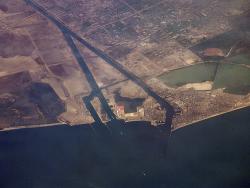
The idea of creating a canal linking the Mediterranean Sea to the Red Sea is a very old one that dates back about 4000 years to the ancient Egyptians. They thought of linking the two seas by using the River Nile and its branches. It was this very old desire that led to the digging of the present Suez Canal.
Innovations

Most of the locks were 184 feet long and 36 feet wide, able to handle boats up to 160 feet long. The sandstone locks (along with wood miter gates, rock-filled timber-crib dams and bypass canals with guard gates) created a slackwater navigation system stretching over 90 miles.
…
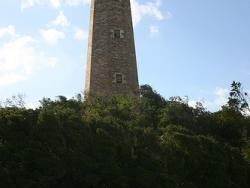
The Old Cape Henry Light house was the first construction project authorized by the First Congress. Constructed by John McComb, Jr. of New York City, this project set the stage for all subsequent public works projects of the Federal Government. In addition, this specific lighthouse was a vital…
Read More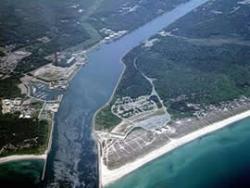
The idea of a canal eliminating the costly and dangerous sea trip around the Massachusetts peninsula of Cape Cod was envisioned as early as 1623 by Pilgrim leader Miles Standish. It was not until financier August Belmont became involved in 1906, however, that sufficient funds for the project…
Read More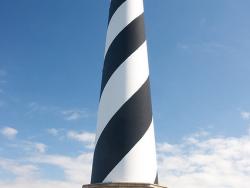
The Atlantic Ocean's northward-flowing Gulf Stream meets the southward-flowing Labrador Current at a point marked approximately by North Carolina's Outer Banks. Since the earliest days of United States commerce, shifting tides, inclement weather, treacherous shoals, and a low-lying shoreline…
Read More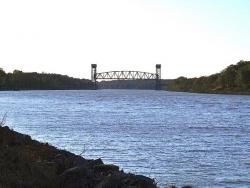
The Chesapeake & Delaware Canal is the only canal built in 19th-century America that still operates today as a major shipping route. Connecting the Port of Baltimore and Upper Chesapeake Bay with the mouth of the Delaware River and the Port of Philadelphia, the canal was one of the first…
Read More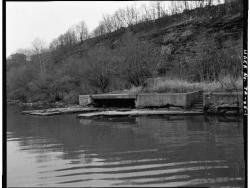
Before the Davis Island Lock & Dam were built, the flow of the Ohio River slowed to little more than a trickle during dry periods. For several months each year, the unreliable flow stranded Pittsburgh's steamboats, towboats, and barges.
The Davis Island Lock &…
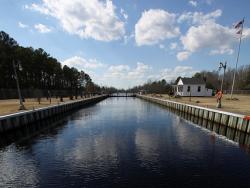
The Dismal Swamp Canal was created as a 22-mile waterway, extending from Deep Creek, Virginia to South Mills, North Carolina. The canal enabled North Carolina producers of building and agricultural products to deliver goods to the Port of Norfolk where they were transferred to ocean-going…
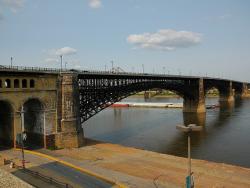
In the decade following the Civil War, the Mississippi River began to lose its standing as the primary transport artery in the Midwest. Railroads were taking over, and Chicago was rapidly becoming the center of Midwestern commerce. The Eads Bridge was the first major railroad link over the…
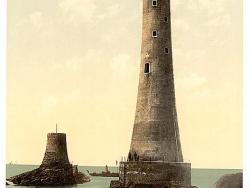
An early image of the James Douglass lighthouse, with the stump of the Smeaton-designed building beside it.
Eddystone Lighthouse is located in the English Channel, 14 miles south of Plymouth, England. The reef upon which it stands was the source of many shipwrecks... and many…
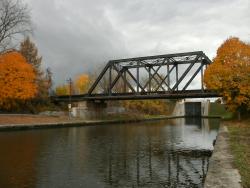
In its day, the famous Erie Canal was the world's longest canal and America's greatest engineering feat. It was the principal route for emigrants from the East and agricultural products from the West. Before construction of the canal, New York City was the nation's fifth largest seaport, behind…
Read More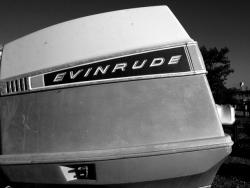

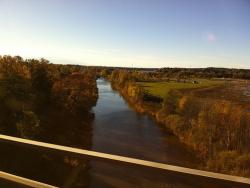
The Gota Canal is the biggest infrastructure project ever built in Sweden. The canal was dug by hand with shovels made of wood. It took over 22 years of 12-hour days - an estimated 12 million man-days of labor - to complete the project.
The Gota (pronounced yeu-ta) Canal is a 347-…
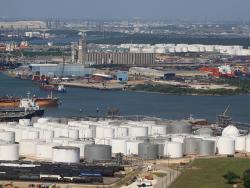
The 50-mile Houston Ship Channel is a manmade port for ocean-going vessels, stretching from the Gulf of Mexico to Houston and Harris County, Texas.
The waterway was originally known as Buffalo Bayou and was swampy, marshy, and overgrown with dense vegetation. Steamboats and…
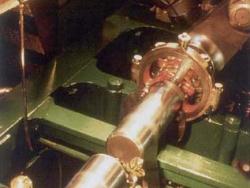
The oscillating steam engine, built by John Penn & Sons, is located aboard the famed paddle steamer Diesbar. Diesbar is the second oldest of a fleet of nine paddle steamers in Dresden. What makes the Diesbar unique is its coal fueled engine and single deck design. The John Penn and Sons…
Read More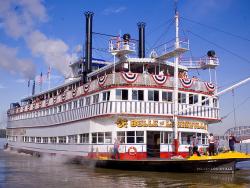
While the Erie Canal has become well-known in the annals of American history, the Middlesex Canal, built two decades earlier and a model for canal engineers throughout young America, has only recently become recognized for its important achievements. Extending 27 miles northeast from Boston…
Read More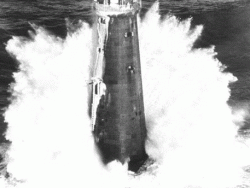
Minot's Ledge is a wave-swept rock formation in a rocky area of ocean about a mile off the Cohasset shore near Boston. Numerous serious shipwrecks prompted the government to erect a beacon there, and construction began in the summer of 1847.
The light, constructed on tall iron legs…
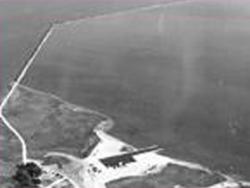
In 1794, the Delaware legislature authorized a lottery to fund the erection of ice piers in the harbor at New Castle. The ice harbor was designed to protect anchored ships from storms and ice. At the time, New Castle served as the principal winter port for ships from the Port of Philadelphia…
Read More
The N.S. Savannah was the first nuclear-powered cargo-passenger ship, built by the New York Shipbuilding Corporation at Camden, New Jersey. The 74 maximum-power thermal megawatt pressurized-water reactor was supplied by the Babcock & Wilcox Company. Nearly 600 feet long with 22,000-tons…
Read More

